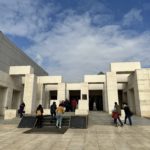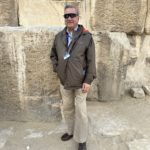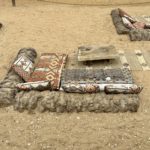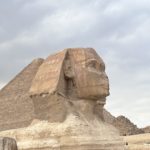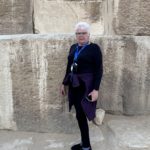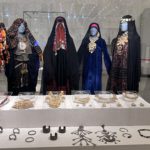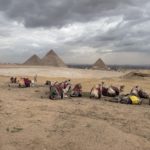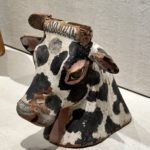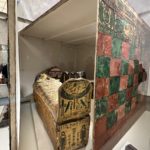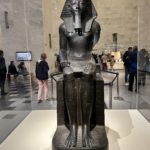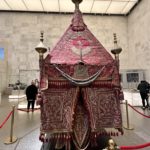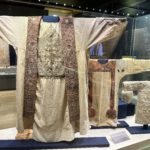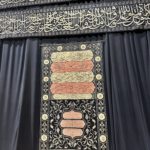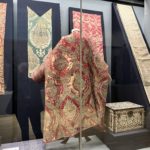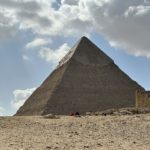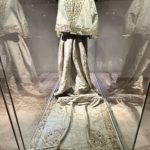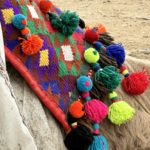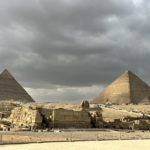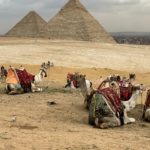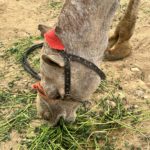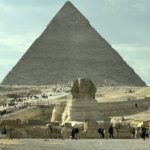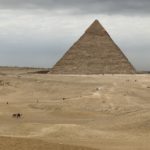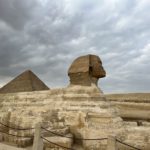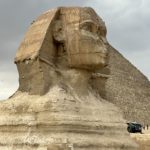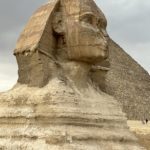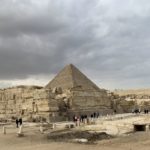The photos from today speak for themselves! Especially the Giza Pyramids and the Sphinx.
But first, we stopped at the National Museum of Egyptian Civilization. It is where the 16th-11th century Royal Mummies were moved in the Celebration YouTube we posted yesterday. It also focuses on Egyptian civilization and cultural development through historical times. Built with joint funding by UNESCO, it was started in 2002 and completed in 2017, The additional hall to display the Royal Mummies was added in 2021. Photography was not allowed in the Hall of Royal Mummies and silence and respect for the deceased is expected. Each mummy was displayed out of its sarcophagus and along with its sarcophagus. Each had signage describing the name, parents if known, dates of reign, accomplishments of the individual and what had been determined about their physical attributes and cause of death, including bone cancer, gangrene, even disabilities like poliomyelitis. The exhibit is very dark and temperature controlled with all the latest technology.
Afterwards we entered those exhibits tracking the development of agriculture, tools, metals, weapons, jewelry and life along the Nile. Then we moved on to the Hall of Textiles to see the development of clothing, weaving, embroidery, etc.
Finally we started an exciting excursion to the Giza Plateau in the southwest outskirts of Cairo, to see Egypt’s iconic Pyramids of Giza and the Great Sphinx. Constructed as tombs for the pharaohs Khufu, Khafre, and Menkaure, each of the three stone structures was built by hand using finely tuned ancient techniques that remain a mystery today. They were built by successive generations of the same family and each began construction on their own pyramid when they assumed control so that their burial chamber would be ready when each needed it. The Great Pyramid of Giza — or Pyramid of Khufu — is the oldest and largest of the three, dating back to 2580–2560 BC and reaching 455 feet high. Each pyramid was part of a complex consisting of a mortuary temple, valley temple, causeway connecting the two temples, boat pits surrounding the main pyramid, and smaller, subsidiary pyramids for Queens. The three temples are surrounded by mastaba (Arabic word for bench) shaped tombs for other family members and high officials.
Since public schools are on winter break, the scene was chaotic with tourists, families with children, and vendors hawking “authentic Egyptian goods” from China. We stopped first to get close to the great pyramid, where Maget gave us discussion on the construction of the pyramids. Construction is currently establishing a new entrance and visitor center. Then we moved on to a panoramic overlook where we could view all three. Of course, camel rides were available!
We ate lunch at the 9 Pyramid Lounge of traditional appetizers, grilled chicken, rice, and vegetables, and a rice pudding type dessert. From this location, we could see 9 pyramids: the three large pyramids, three smaller to the left, and three smaller in a row on the right.
Located nearby on this otherworldly archaeological site, you’ll also see the mystical Sphinx, a huge limestone statue of a reclining lion with the head of the pharaoh Khafre, sited so that, through eternity, he can guard his family cemetery. It is actually the form of a solar god called Horemahket.


